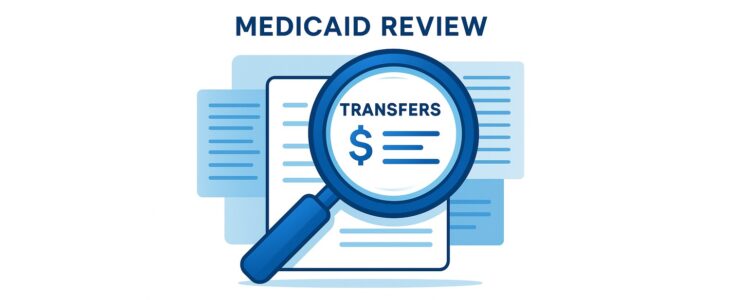How to Navigate the Costs of Long-Term Care: Medicaid, Insurance, and More
Planning for long-term care isn’t something most of us want to think about, but in New York, the costs are hard to ignore. Nursing homes, assisted living, and even in-home support can quickly drain savings if you aren’t prepared. The good news is that there are ways to protect yourself and your...
How to Navigate the Costs of Long-Term Care: Medicaid, Insurance, and More Continue reading…

Why Small Transfers Can Create Big Medicaid Problems
Transferring assets can have severe consequences for Medicaid eligibility in New York, especially when applicants are planning for nursing home care. Below is a comprehensive, expert-level guide about uncompensated transfers, providing practical options, tips for trust management, and current updates on home care Medicaid look-back requirements.
What Is an...
Why Small Transfers Can Create Big Medicaid Problems Continue reading…
Can You Still Qualify for Medicaid If Your Income Is Too High?
For many seniors in New York, Medicaid is the only way to afford long-term care at home or in a nursing facility. But if your income seems too high, you might worry that you don’t qualify. The good news is that there are legal tools and planning strategies that can help you...
Can You Still Qualify for Medicaid If Your Income Is Too High? Continue reading…

Why You Need an Elder Law Attorney in New York: 10 Crucial Reasons
As our population ages, the need for specialized legal assistance becomes increasingly apparent. In New York, where the cost of care and complex laws can be overwhelming, an elder law attorney can be an invaluable asset. Here are ten compelling reasons why you or your loved ones might need an elder law...
Why You Need an Elder Law Attorney in New York: 10 Crucial Reasons Continue reading…

Wishing you a wonderful end of summer
Dear Clients and Friends
PLANNING FOR THE FALL. As we savor the last days of summer and look forward to the cooler days of fall, it's the perfect time to explore the city and enjoy all that the season has to offer. Whether you're planning to catch a
Wishing you a wonderful end of summer Continue reading…

The Big Mistakes People Make in Medicare – and How to Avoid Them
Choosing the right Medicare coverage can be tricky, and it's easy to fall into costly traps that limit your healthcare options. This article highlights the hidden dangers seniors often encounter and offers advice on how to sidestep them. Click Here to read this article by The Wall Street Journal...
The Big Mistakes People Make in Medicare – and How to Avoid Them Continue reading…

Does Putting Your Home in a Trust Protect it from Medicaid?
Explore how Trusts can safeguard assets, like your home, for Medicaid eligibility, balancing wealth preservation with healthcare access. Click here to read this article published by Yahoo Finance to learn more.
Protect and plan your future with expert guidance. Contact us at 212-709-8112 or ksverdlov@sverdlovlaw.com to learn more or book a consultation...
Does Putting Your Home in a Trust Protect it from Medicaid? Continue reading…
3 Tests You Must Pass to Qualify for Medicaid Home Care in New York
It is complicated to qualify for Medicaid in New York. You must pass the health care test, the asset test and the income test.
Contact Sverdlov Law at 212-709-8112 or ksverdlov@sverdlovlaw.com to learn more or set up a consultation here: https://calendly.com/katyasverdlov
https://www.youtube.com/watch?v=sWolme9WHe8&t=95s
Can you qualify for Medicaid if you have a large Retirement Account?
Most people think they won't be able to qualify for long term care Medicaid in New York if they have money in a retirement account, such as 401K or an IRA. If they live in New York - they are wrong! You can save your retirement assets, use the income and...
Can you qualify for Medicaid if you have a large Retirement Account? Continue reading…

Is A Pooled Income Trust The Answer To My Getting My Parents Affordable Home Care?
Today, especially with the many concerns about health safety in nursing homes, Medicaid home care for your parents becomes a more popular long-term care choice. However, for some people it seems out of reach. A Medicaid pooled trust might be the answer you seek. Learn more…
https://ktstrust.org/is-a-pooled-trust-the-answer-to-my-parents-home-care/
